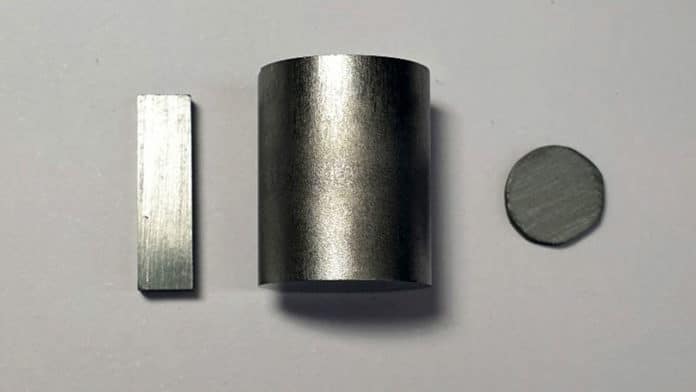The thermoelectric power generator converts waste heat into useful electricity without producing greenhouse gas emissions. This technology could help recycle energy that’s otherwise being wasted as heat in electronics, power plants, and engines. But despite helping power NASA’s 2020 Mars rover, the high cost and low efficiency of these devices have prevented their widespread use on Earth.
Now, a team of engineers from Northwestern University and Seoul National University in Korea has developed a new thermoelectric material that may be the most efficient and cheap one yet. The new material – the improved polycrystalline form of purified tin selenide – outperforms the single-crystal form in converting heat to electricity, making it the most efficient thermoelectric system on record.
The thermoelectric material inside the thermoelectric devices generates electricity by using a temperature difference between its two sides. One side of the device is hot, and the other side is cold. Heating one side of the material can cause electrons to start moving from the warmer side to the cooler side, generating an electric current in the process.
To be best at waste heat conversion, the material needs to have a high electrical conductivity but low thermal conductivity so that electrons can flow through easily while the heat stays on one side. Besides, the material needs to be stable at very high temperatures. These challenges and others make thermoelectric devices more difficult to produce than solar cells.
The efficiency of waste heat conversion in thermoelectrics is reflected by its “figure of merit,” or ZT. The higher the number, the better the conversion rate. The ZT of single-crystal tin selenide earlier was found to be approximately 2.2 to 2.6 at 913 Kelvin. Now Northwestern University engineers claim to have achieved a record ZT of approximately 3.1 at 783 Kelvin.
The key was the surprising material called tin selenide, which the team had previously pushed to a ZT of 2.6 in its single-crystal form. However, the single-crystal form is impractical for mass production because of its fragility and tendency to flake. Therefore, the engineers used tin selenide in polycrystalline form, which is stronger and easier to cut and shape as needed.
When the researchers began experimenting with this form, they found the material’s thermal conductivity was high, which is undesirable in a thermoelectric device. The closer examination revealed that the culprit was a skin of oxidized tin on the material. Heat flowed through the conductive skin, increasing the thermal conductivity.
After learning that the oxidation came from both the process itself and the starting materials, the Korean team found a way to remove the oxygen. The researchers then could produce tin selenide pellets with no oxygen, which they then tested. The purified tin selenide managed to achieve a ZT of approximately 3.1, exceeding that of the single crystal form, making it the most efficient on record.
“This opens the door for new devices to be built from polycrystalline tin selenide pellets and their applications explored,” said Northwestern’s Mercouri Kanatzidis, a chemist who specializes in the design of new materials.
Potential areas of application for the thermoelectric material include the automobile industry, heavy manufacturing industries (such as glass and brick making, refineries, coal- and gas-fired power plants), and places where large combustion engines operate.
